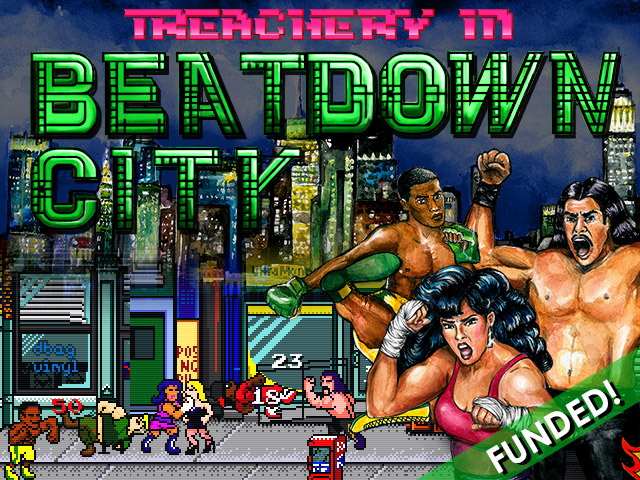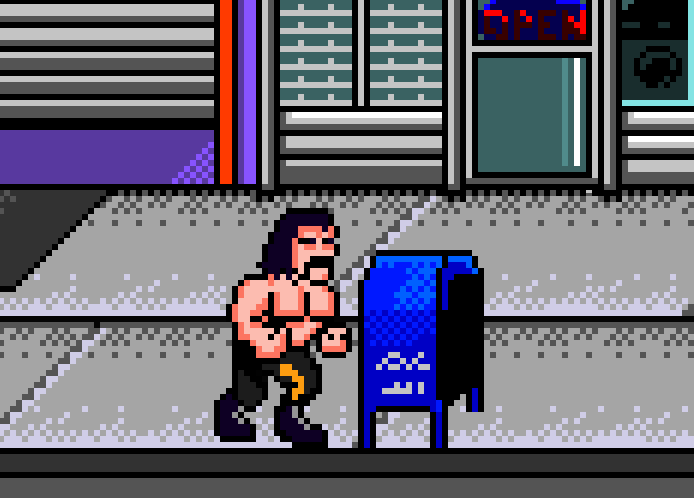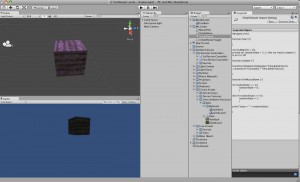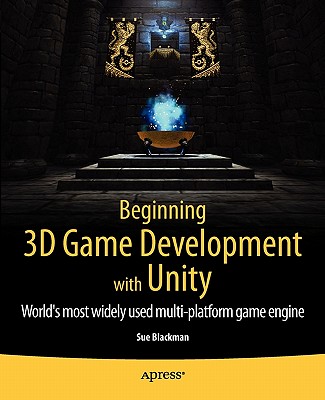Tag Archives: unity3d
Pollen DevLog 2: Clouds, New Enemy Spawning, Sounds
Pollen is a game project I’m working on in Unity, it’s basically my first game and I’ve been working on it part time since October 2013 while teaching myself programming and game design fundamentals. I’m calling it a low poly butterfly action rogue-like like. It’s probably more ambitious of a project than I should have attempted as a first real thing but I am nothing if not ambitious. It’s been slow but I’ve also been teaching myself a lot of stuff in the process. It’s been deliciously fun. In this devblog I demonstrated my new sound effects, new clouds and new dragonfly enemy type. This is a short devblog where I show some gameplay and explain the latest stuff I’ve done.
NewbQuest Ep.2: Shawn Allen, Game Designer and Artist for Treachery in BeatDown City
In this episode we interview indie game developer Shawn Allen who is working on Treachery in Beatdown City, a side scrolling beat ’em up with RPG elements which just successfully funded on Kickstarter. We talk about being an indie developer, the Kickstarter process and making art for games.
The Kickstarter video for the recently funded campaign is a great intro to Shawn and his world:
In our interview we had a great conversation about his choices for an 8-bit, retro art style along with ways he was trying to work within that convention to create something new, the challenges of the indie lifestyle, creating a game targeting Playstation and working with Sony, collaborating with artists, musicians and coders and much more.
You can subscribe and download the show via iTunes, and if you do I’d love it if you had time to leave an honest review. Note: right now the show hasn’t appeared in the iTunes directory, for now use this link to subscribe.
Podcast: Play in new window | Download | Embed
You can also check out the show via the NewbQuest YouTube channel, if you prefer that format. If you do I’d appreciate if you’d subscribe or leave a comment over there.
To learn more about Shawn Allen and his game Treachery in Beatdown City you can head over to www.beatdowncity.com and you can follow Shawn on Twitter at @anuchallenger
Thanks again to Shawn for taking the time to come on and talk, and to you for checking out the blog and the show!
Newbquest Developer Blog 1: Butterfly Intro
I’m back! It’s been a while. I was very busy, but now, here I am. I’ve decided to experiment with a new format for this blog which will focus on posting short video developer blogs, showing the progress I am making with learning to make games in Unity. This is a short intro to my current level of progress, as I work further on the project I will provide more detailed explanations of what’s going on and what I’m up to. This first short video is showing what I’ve created so far and explaining a few of the systems involved.
The project I’m currently working on has the working title: Butterfly. The basic idea is that you fly around in 3d space as a butterfly and shoot missiles at other butterflies. Although at the moment it’s quite absurd my goal is to develop it into something more visually beautiful. I’d like it to be a visual audio experience as much as a game and so I’ve got some placeholder audio and visual assets in there to start. Once I get things going a little less shakily I’ll post some web players so you can try the mechanics yourself.
A few notes about my approach.
My goal in posting these videos and blog posts is to try to meet other people who share my interests, and to hold myself accountable and motivate myself to make progress. I feel like having an audience, even if it’s very small, will help to keep me on track. I was very inspired by what the people at Overgrowth are doing with their documentation project. I am not as cool as them, nor is my game, but hey.
I am very inspired by the Lean Startup methodology so a big part of the reason I am sharing this in such an early state is to try to get some impressions and feedback from anyone who looks at it. I welcome all feedback, positive, negative and everything in between. If you think this is a dumb idea, that’d be great to hear! If you’d like to see it go in another direction, that’d be great too. My goal is to try to build up this simple prototype and iterate on it until it becomes something cool and fun and to try to do that in a fairly public way through this blog.
I’d love to hear from you! Feel free to leave a comment here or on the YouTube page where the video lives. I promise to reply to everyone.
Thanks!
Matt
Beginning 3D Game Development with Unity by Sue Blackman: Epic Review Pt.2
Disclosure: the links to the book in this post are affiliate links (more info here), this means that if you choose to buy the book through my link I earn a small commission at no extra cost to you. I am reviewing this book because I’m actually working through it, any income earned will help to support my creative projects, pay hosting fees etc.
Having just finished Chapter 3 of Beginning 3d Game Development with Unity by Sue Blackman I have to say so far I’m quite enjoying it. Chapter 2 was a discussion of Unity’s interface basics. For someone who has done the basic tutorials this should be somewhat familiar although there were a few points I did find helpful. One was the fact that by pressing V key you can cause an object to snap to the vertex normal of another. I can imagine this would be very useful if you want to build something out of primitives like a wall of bricks. Great tip that I didn’t know yet. I also got some more clarity around the Center/Pivot and Global/Local toggles at the top of the interface next to the transform tools. Essentially what these do is allow you to toggle the orientation that the object will be transformed in, whether they are related to themselves or to the world at large. The rest of it was fairly familiar and I am guessing it took me about 30 minutes to go through it. I did it in bed last night and it was pretty un-strenuous.
Chapter 3 is where Blackman introduces scripting. For us non-programmers this is where the water starts to get a bit hot. I have to say I was really pleased with the way Blackman introduced things. It’s definitely not an in-depth programming tutorial but if you’ve done the free scripting intro tutorial provided by Unity it serves as a nice refresher and fleshes out a few points I was weak on. Two things that I liked were her explanation of dot notation and the explanation of the way that Unityscript can declare a Game Object as a variable. This is something I really struggled with when I was just hacking around and I was happy with the way Blackman approached it here.
Thinking about my skill level in relation to the book I think this book is a nice jumping off point after you have done the Unity Lerpz tutorial, Car Racer and Scripting one, as I have.
I’ve decided to start logging the time I spend on each of the chapters in this book. This chapter took me about 45 – 50 minutes of focused work including a bathroom break and responding to a text for work. This is actually a great tip that Blackman gave back in chapter 1: log your time as you progress through your game development and the book. The idea being you will then know how long it will take you in the future to achieve similar tasks. I love this tip and have started doing it. I think it’ll be really cool to know how much time I spent overall reading the book and doing the exercises and will also help you guys to know if the book is a good fit for you based on how much time and effort is required. I will also be using this when I start prototyping my cloud game idea and will keep a separate log for time spent on this blog. Since I got through that chapter fairly quickly I think I’m going to move on to chapter four, Terrain Generation. I’m psyched!
You can buy Sue Blackman’s Beginning 3D Game Development with Unity here from Amazon either as physical or kindle edition.
Other Links & Resources for this Post:
Blackman has a thread going for the book on the always helpful Unity3d.com Forums.
The scripting tutorial I mentioned is available here for free.
Beginning 3D Game Development with Unity by Sue Blackman: Epic Review Pt.1
Disclosure: the links to the book in this post are affiliate links (more info here), this means that if you choose to buy the book through my link I earn a small commission at no extra cost to you. I am reviewing this book because I’m actually working through it, any income earned will help to support my creative projects, pay hosting fees etc.
I just picked up Sue Blackman’s book ‘Beginning 3D Game Development with Unity‘ at my local megabookstore. I think I paid a little more than I needed to, as the physical book can be found on Amazon for cheaper but I was impatient. It’s a big huge tome, about 1000 pages. I joked to my girlfriend that if it didn’t turn out to be good I could always use it as a weapon for bashing people to death. It contains a single project that you work through: creating a 3d point and click adventure game in Unity. I thought this sounded like a fun and fairly complex project and so decided to check it out. Having done three of the available free tutorials on the Unity site, a 3d platformer, a racing tutorial and a scripting tutorial, I wanted to continue with something that was a bit bigger and that makes use of some more advanced concepts. As I go through the book I’m going to do a running commentary on this site so you can follow my progress and also get a review of the book to decide if you think it will work for you. Also hopefully this will help to keep me motivated and on track in finishing the book and working through the examples! I am definitely guilty of having bought big how-to books in the past and trailed off midway. Hopefully you, faithful readers can help keep my feet to the fire in finishing the book and this review series!
Having just read the first chapter I like the book so far. Blackman speaks in an authoritative voice about the history of adventure games, basic game design considerations and provides a primer for 3D artists moving from creating pre-rendered 3D art to real-time games. I know a bit about some of the very basic concepts involved in creating 3D assets. Nonetheless I found Blackman’s explanation of real-time specific concepts like shared or averaged vertices and vertex vs. pixel lighting to be enlightening (no pun intended). Having a review of normal mapping and occlusion culling, which I sort of understood, was useful as well. Generally speaking for someone like me who knows some of the generalities of 3D having things re-explained in a straightforward way with a focus on real-time rendering has increased my confidence for tackling the more complex material to come.
Her discussion of game design was also helpful for me. Although some of it I had absorbed before from various sources I found that running through the list while thinking about my current idea really sparked off some inspiration. I had to put the book down and grab my laptop to take down some quick notes in Evernote. If nothing else this was very helpful as a little shot of inspiration. As someone who loves checklists running down her list of considerations for planning an idea really got my creative juices flowing and gave me some motivation to move to the next step.
She provided a nice four or five page history of the adventure genre, starting with text based games and moving through a brief history of point and click adventures. This included an interesting discussion about how the evolution of graphic technology affected the fate of the genre moving from text, to computer drawings, to pre-rendered 3d, to low res real time 3d and now into the current generation of HD real time 3d. Her argument is that the shift from pre-rendered games like Myst and Riven (which I really loved as a teenager, and even my dad, a total non-gamer liked) to the low res 3d of things like Lucasarts Grim Fandango hurt the adventure genre, both in terms of the visual effect produced and in the cost of production (lots more art assets to produce). With the advent of real time 3d, games like Doom made a lot more sense as they provided an exciting new immersive experience and didn’t rely on the visual beauty of lots of art assets to be successful. I find these kind of discussions of the intersection of art and technology very interesting and Blackman clearly has lived through these shifts and has a valuable perspective.
With the MASSIVE success of Doublefine’s Kickstarter campaign for their untitled new adventure game it seems that there is a real hunger for these types of adventure games. Now that the visual technology has improved and it is possible to do good looking adventure games in real time 3D I’m curious to see if we see a new resurgence in the genre. I think purely on the strength of the groundswell of support for Doublefine’s game we’ll see some developers re-evaluating the genre and perhaps dipping a toe in. The success of Doublefine’s campaign (and some other less dramatic and well publicized campaigns) feels like an important moment for the indie game development movement. I am pinning my hopes on this movement for the development of the artistic, deep and innovative games that I’d like to see so for me this is terrific news. I plan to do a series of posts on the crowd-sourcing movement for raising money for game development soon since I think although it’s a little less relevant to me and my fellow newbs on our quest it’s very inspiring in terms of hopes for the future, once we’ve made some stuff and established a following.
You can buy Sue Blackman’s Beginning 3D Game Development with Unity here from Amazon either as physical or kindle edition.
Other Links & Resources for this Post:
Blackman has a thread going for the book on the always helpful Unity3d.com Forums.
Find the free tutorials I mentioned on the Unity3d.com site here.
Evernote: awesome note taking software, free.
Doublefine’s Kickstarter page.





